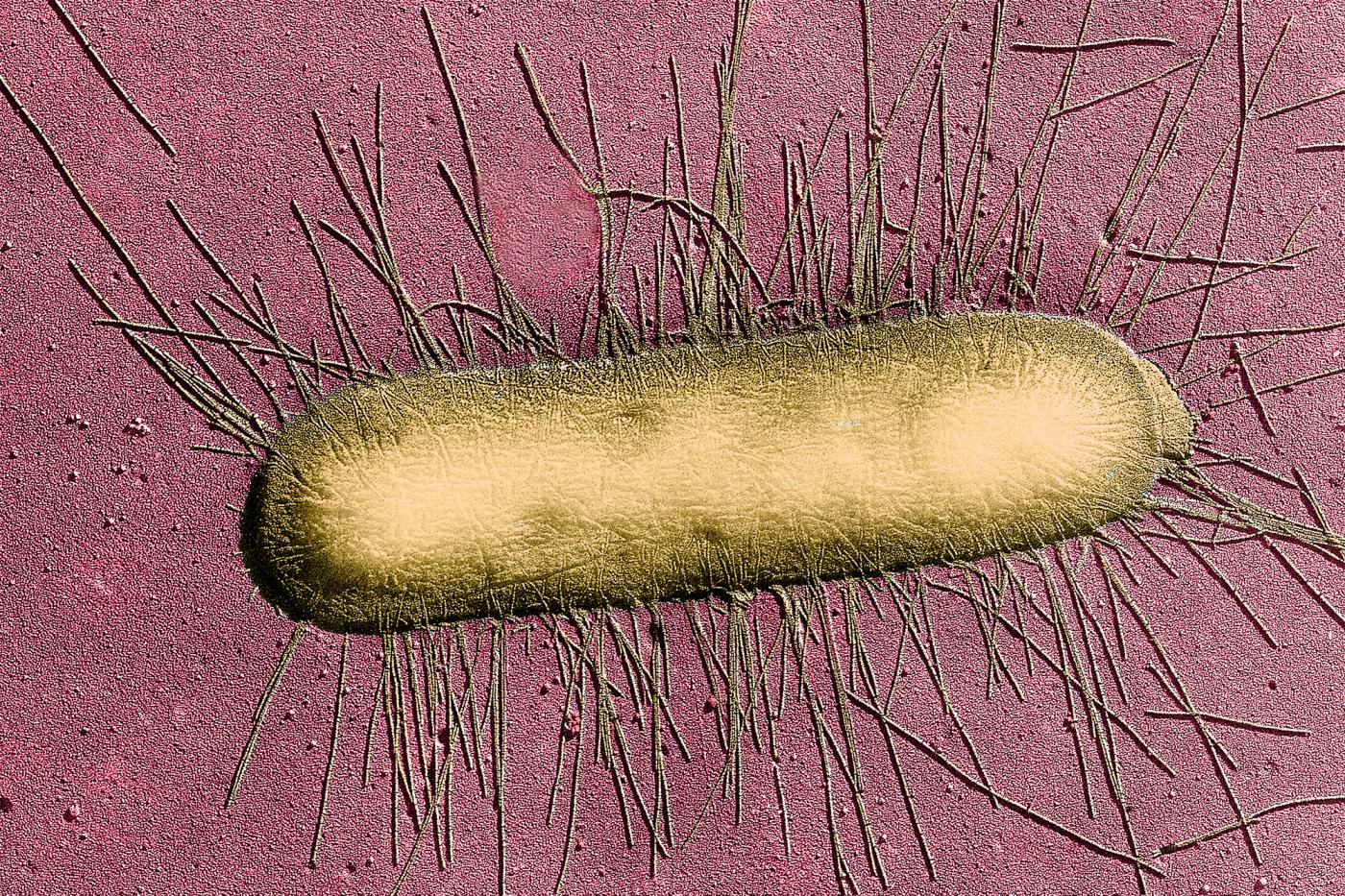What are the causes?
Staphylococcus aureus is the most common Staphylococcus strain in human and animal pathology. It is a widespread bacterium that can colonize the skin or nose without necessarily leading to disease. But if it enters the body via a cut, scratch or other skin lesion, it can cause an infection. Infections can become severe if the bacteria invade deeper tissues or enter the bloodstream.
Along with Escherichia coli, Staphylococcus aureus shares the dubious distinction of being the leading cause of nosocomial infections (infections contracted in hospitals). In France, S. aureus also tops the list of bacteria responsible for food poisoning.
Staphylococcal food poisoning is not a progressive infection but is caused by food that has been in contact with a Staphylococcus strain producing enterotoxins. These toxins can be found in raw or cooked food (they are heat resistant).
How do the bacteria spread?
Staphylococci can spread in various ways:
- Through direct contact with infected skin or contaminated items via a wound if the skin barrier is broken; bacteria can then develop within the lesion, leading to a skin infection which varies in severity depending on the bacterial strain responsible for the infection, the speed with which treatment is administered, and the patient's general state of health.
- Healthcare professionals can also spread bacteria among patients if strict hand hygiene measures are not applied.
- During surgical procedures. As staphylococci are very widespread, internal infections can develop. In a great many cases, the bacteria come from the patient's own flora and develop pathogenicity within the patient's body.
- During diseases or treatments that lead to a weakened immune system, and in individuals with diabetes (owing to a combination of lowered immune defenses and high blood sugar levels).
What are the symptoms?
Staphylococcus aureus can infect all organs. It is worth bearing in mind that 30 to 50% of the population are healthy carriers of Staphylococcus; in other words the bacteria are present on the skin or in the external mucous membranes, especially the nasal mucosa, with no detrimental symptoms. This is natural since Staphylococcus is part of the bacterial flora found in the skin and mucous membranes.
Symptoms can vary depending on the mode of transmission:
- If there is contact with an infected person through a wound, care must be taken, as although superficial and localized Staphylococcus infections are often benign, blood-borne spread of the bacterium can lead to secondary infections. Various suppurative (pus-forming) infections may occur as a result of bacterial proliferation; the most common include superficial or deep folliculitis, boils and carbuncles. Some Staphylococcus strains that produce toxins such as exfoliatin can cause specific skin diseases such as bullous impetigo or scalded skin syndrome in young children,
- Diseases contracted during surgery depend on the organ infected and can lead to osteomyelitis (inflammation and infection of the bones) and various visceral infections, such as endocarditis (inflammation of the heart), lung conditions or pyelonephritis (kidney infection). Once again, these diseases can be exacerbated by the production of specific toxins by the bacteria that have a damaging effect on the tissues of the infected host, aggravating the clinical profile (necrotizing pneumonia due to the Panton-Valentine toxin or staphylococcal toxic shock syndrome due to the TSST-1 toxin),
- Staphylococcal food poisoning can cause vomiting, diarrhea and stomach cramps following ingestion. These symptoms generally disappear a few hours later without the need for any treatment.
How is infection diagnosed?
Diagnosis is generally confirmed by bacterial cultures of infected tissues or bodily fluids to identify the presence of staphylococci. Additional tests may be performed to determine antibiotic sensitivity, which is crucial in guiding treatment.
What treatments are available?
Treatment depends on the strain of Staphylococcus and the level of antibiotic resistance. Minor infections may only require local treatment and disinfectant, but more severe infections may need to be treated with antibiotics, sometimes administered intravenously. In some cases, surgery may be needed to drain abscesses.
Antibiotics are currently the preferred treatment, particularly in the early stages of infection. However, the recent emergence of vancomycin-resistant strains suggests the likelihood of a shortage of treatment options, although various vaccine approaches are currently being studied. Methicillin-resistant Staphylococcus aureus (MRSA) strains are among the most common antibiotic-resistant bacteria found in hospitals, representing approximately 27% of Staphylococcus aureus infections in France (based on a national survey on the prevalence of nosocomial infections and anti-infective treatments in healthcare establishments in France in May and June 2017). Viruses that specifically infect and destroy bacteria, known as bacteriophages, are used in some countries, including Russia and Georgia, to combat Staphylococcus aureus infections.
How can infection be prevented?
Preventing staphylococcal infections involves good personal hygiene, regular hand-washing and properly treating any cuts or grazes. The only way to limit the spread and persistence of Staphylococcus strains is patient isolation and strict implementation of hygiene measures.
In hospital environments, stringent hygiene and isolation measures are vital to contain the spread of these bacteria.
Who is affected?
Conditions caused by Staphylococcus aureus are difficult to estimate globally because infections can vary greatly, but they are very common and remain a real cause of concern for medical professionals. They are particularly frequent in hospitals, where patients are more vulnerable.

New weapons to fight bacteria
September 2024


